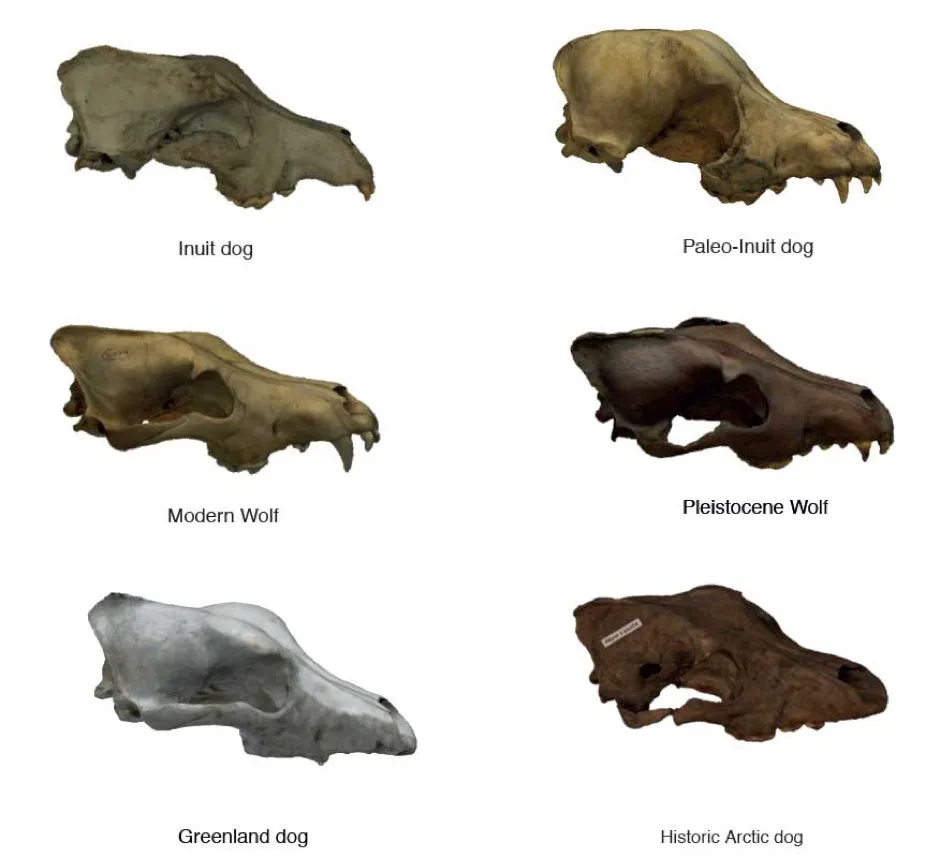The dog is known for being man’s best friend, but never was that relationship more obvious than among the Inuit people in the North American Arctic.Research has revealed new details about the types of four-legged friends they used.
When they migrated from Alaska and Siberia, it is suggested that the Inuit brought unique, specialised sledge dogs with different features to better withstand tough terrain, instead of adopting local canines.
Scientists from the University of Exeter looked at the ancient remains of 391 dogs and found the animals in use were larger, with proportionally narrower craniums to earlier dogs.The Inuit appeared to keep their own dogs, indicating they were keen to enhance or keep the special features they had.
“Dogs have lived in North America for as long as humans, but we show here that the Inuit brought new dogs to the region which were genetically distinct and physically different from earlier dogs,” said Dr Carly Ameen, an archaeologist from the University of Exeter and the study lead.
Read more about dogs:
- Dogs' secret superpower: not intelligence, but love
- When it comes to sharing, wolves give dogs a bad name
“Thousands of years ago there was not the huge number of dog breeds as we know them today. Through analysing the DNA and morphology of the remains of hundreds of dogs, we’ve found that the dogs used by the Inuit had distinctive skull and teeth shapes, and would have likely looked different in life to dogs already in the Arctic.”
Studying the DNA of little over 900 dogs and wolves from the last 4,500 years also suggest the animals used on Inuit sites occupied from around 2,000 years ago were genetically different from the dogs already in the region.

“Archaeological evidence has shown us that before the Inuit arrived in North America, dog sledging was a rarity,” added co-lead author Tatiana Feuerborn, from the Globe Institute in Denmark and the Centre for Palaeogenetics in Sweden.
“Our analysis of the DNA suggests dogs brought by the Inuit were distinct from the earlier dogs of the North American Arctic to fill a specialist role in helping communities thrive in this hostile environment by aiding with transportation and hunting.
“The genetic legacy of these Inuit dogs can still be seen today in Arctic sledge dogs.”
Reader Q&A: Are any dog breeds close to becoming a new species?
Asked by: Phillip Hogg, via email
In a word, ‘no’. Domestic dogs evolved between 17,000-33,000 years ago. Most ‘breeds’, which have been artificially selected by humans, have arisen very recently within the last 200 years.
Visually, a Chihuahua is the chalk to a Great Dane’s cheese, yet they are still the same species, Canis lupus familiaris, and are direct descendants of the grey wolf. All domestic dog breeds are able to interbreed to give birth to reproductively viable offspring.
This is because their genomes remain relatively unchanged, despite their physical characteristics appearing so different. This key evidence tells us that various dog breeds are not in the running to become a new species any time soon.
It takes a long time for mutations, which cause inheritable changes to characteristics, to arise within populations.
Read more:
